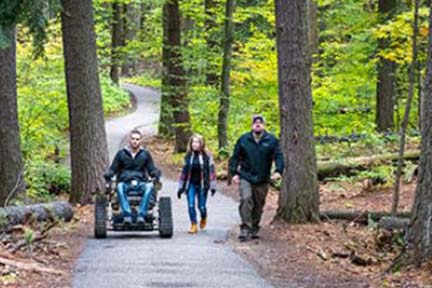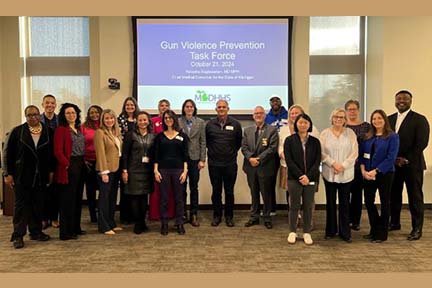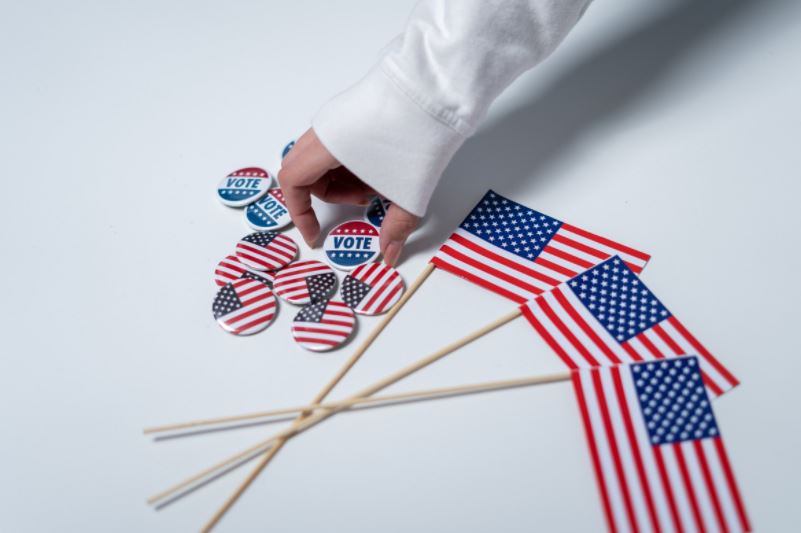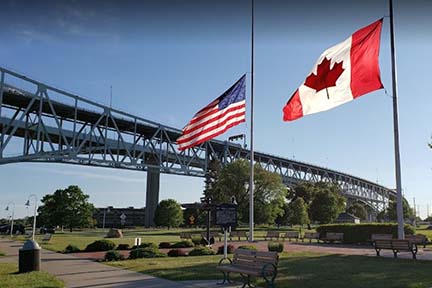
News Digest – Week of Oct. 21, 2024
|
|||||||||||||||
|
|||||||||||||||
News Digest – Week of Oct. 21, 2024
Want to learn more about the lakes you love? Check out MSUE’s 2025 inland lakes course! |
|||||||||||||||
|

|
|||||||||||||||
|
|||||||||||||||
News Digest – Week of Oct. 21, 2024
Want to learn more about the lakes you love? Check out MSUE’s 2025 inland lakes course! |
|||||||||||||||
|

|
|
||||
 |
||||
DNR News |
||||
|

Press Release FOR IMMEDIATE RELEASE: Oct. 22, 2024 CONTACT: Lynn Sutfin, 517-241-2112, [email protected] Michigan Gun Violence Prevention Task Force holds first meeting LANSING, Mich. – The Michigan Gun Violence Prevention Task Force held its first meeting Monday, Oct. 21, to begin work outlined in Executive Order 2024-4, signed earlier this year by Gov. Gretchen Whitmer. Members appointed to the task force have been charged with identifying root causes of gun violence, compiling and reporting relevant data, maximizing existing resources, soliciting perspectives from diverse community partners and recommending policies to save lives across the state. The task force is housed within the Michigan Department of Health and Human Services (MDHHS), and its membership reflects a wide range of community partners, including state department directors, medical experts, law enforcement professionals, tribal representatives, academic researchers and more. “Gun violence is the leading cause of death in children in our state and across the country–now is the time to address gun violence as a public health issue, and Michigan families deserve to feel safe whether they are at work, school or walking down the street,” said Dr. Natasha Bagdasarian, chief medical executive and chair of the Michigan Gun Violence Prevention Task Force. “This task force is undertaking the important work of helping bring solutions to light that will save lives and prevent needless tragedies.” Governor Whitmer established the Michigan Gun Violence Prevention Task Force in June to continue her administration’s efforts to address firearm-related injuries and deaths in Michigan. In 2023, Governor Whitmer signed into law the most comprehensive firearm injury prevention policies in more than 30 years, including:
The Michigan Gun Violence Prevention Task Force hosted its first meeting Monday, Oct. 21, as it began its work to address gun violence and reduce firearm-related deaths and injuries. members concerned about someone who may harm themselves or others can seek a court order to temporarily confiscate their firearms.
“I am excited to be a part of addressing and finding potential solutions for the pandemic that is gun violence,” said Task Force member Kym Worthy, Wayne County prosecutor. “As the elected prosecutor for Michigan’s largest county I especially want this Task Force to address the lack of support and other services for the forgotten victims and survivors of gun violence, the very real and prominent racial and other disparities, the primary and secondary trauma of gun violence, how gun violence has been politicized leading to the stoppage of real and common sense solutions, the deep divide between those affected by gun violence, the collection of real Michigan data, and the many other issues that must be parsed by this group in order to achieve levels of success.” “I, like most Americans, have experienced tragedy and loss due to firearm violence. These tragedies are preventable, and I have dedicated my career to conducting unbiased, rigorous research to identify effective ways to prevent firearm violence,” said Task Force member April Zeoli, policy director at the University of Michigan Institute for Firearm Injury Prevention and faculty at the U-M School of Public Health. “The Governor’s Task Force brings together experts from many fields to work on real strategies that will reduce the number of firearm injuries and deaths in the state of Michigan. This is important work, and I am excited to get started.” “Governor Whitmer’s administration has emerged as a beacon of defiance against the relentless scourge of gun violence,” said Task Force member Alia Harvey-Quinn, Founder and Executive Director of FORCE Detroit. “FORCE Detroit stands with the governor, as she fights with us and others to forge a freer, safer Michigan with the creation of a Gun Violence Task Force laser-focused on prevention. Community Violence Intervention (CVI) isn’t just a plan—it’s an evidence-backed solution that cuts through political bipartisanship and saves lives. Backing CVI programs means empowering frontline staff, like our team at FORCE Detroit, who grind day and night to reduce gun violence in Michigan communities.” |

|
|
|

 |
| FOR IMMEDIATE RELEASE October 22, 2024
|
MEDIA CONTACT Jocelyn Garza 989-245-7117 [email protected] |
Blue Water Bridge traffic shift planned for Oct. 23, additional work to continue through November
Fast facts:
PORT HURON, Mich. - The Michigan Department of Transportation (MDOT) will be shifting eastbound traffic back to the eastbound span of the Blue Water Bridge (BWB) on Oct. 23, weather permitting, following the majority of the critical maintenance work started in May. After the traffic shift, the BWB will be able to accommodate wide loads up to 15 feet, along with superloads on an at-need basis.
Crews will continue additional painting on the approach span through the end of November, requiring intermittent lane closures and traffic shifts. The Pine Grove Avenue ramp to the toll plaza will remain closed during peak hours (Wednesday – Saturday) through the end of October.
This project, managed by MDOT, addressed required maintenance on the eastbound BWB span connecting Port Huron, Michigan, and Point Edward, Ontario. During work, the Federal Bridge Corporation Limited (FBCL) also addressed additional repairs on the eastbound span, working closely with MDOT to coordinate work and closures, reducing continual impact on commuters.
The BWB is an essential economic link between Canada and the United States. This important project continues the commitment between MDOT and FBCL to maintain and preserve the safety and reliability of the BWB.
For more information:
Dave Smith
MDOT BWB
810-434-3274
[email protected]
Jocelyn Garza
MDOT Office of Communications
989-245-7117
[email protected]